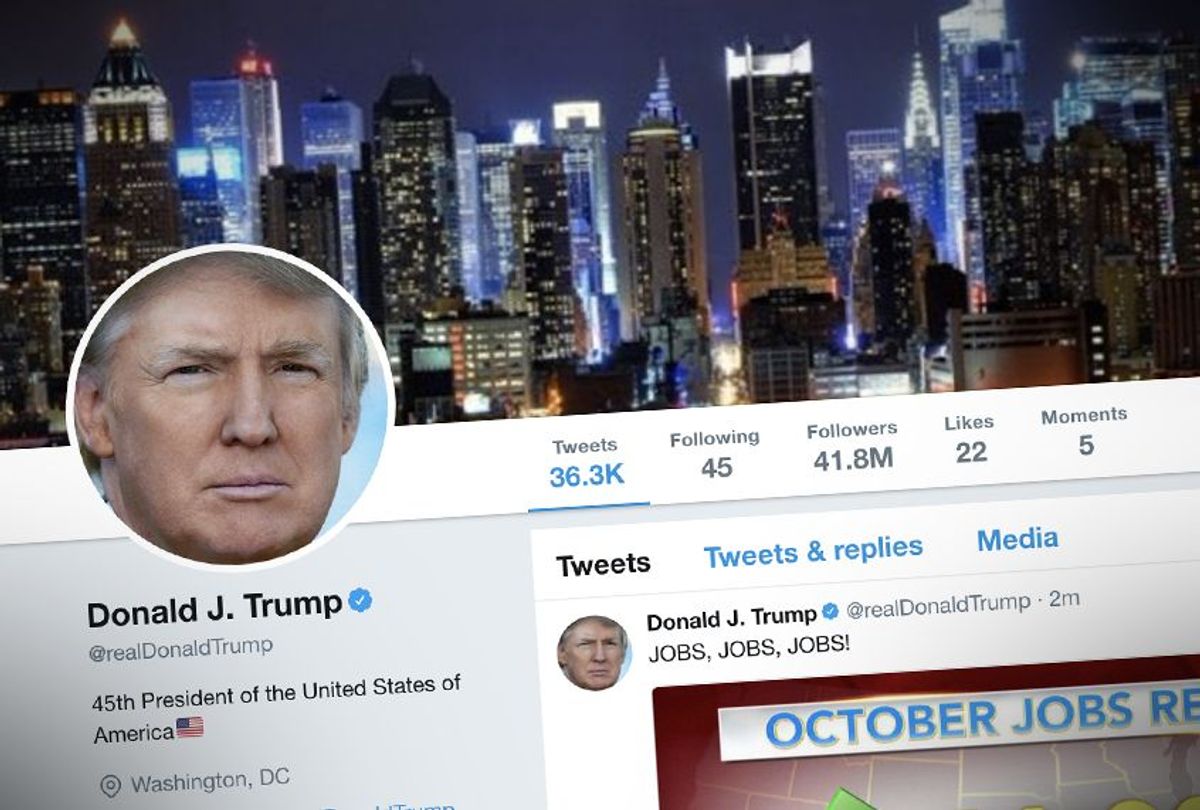 As Media Matters readers know, for the last few months I’ve typically started my day by comparing any tweets President Donald Trump has sent that morning with the corresponding programming on his favorite cable news program, "Fox & Friends," searching for cases where he appears to be live-tweeting the broadcast.
As Media Matters readers know, for the last few months I’ve typically started my day by comparing any tweets President Donald Trump has sent that morning with the corresponding programming on his favorite cable news program, "Fox & Friends," searching for cases where he appears to be live-tweeting the broadcast.
I wrote about that effort for a piece in Politico Magazine:
It’s no secret, of course, that the president likes to tweet about what he sees on TV. Thanks to diligent reporting from the White House beat, we know Trump often watches several hours of cable news each day via the “Super TiVo” he had installed at the White House. And journalists at CNN, the Washington Post, New York magazine, among others, have compiled lists of Trump tweets they believe were inspired by Fox.
But here’s what is shocking: After comparing the president’s tweets to Fox coverage every day since October, I can tell you that the Fox-Trump feedback loop is happening far more often than you think. There is no strategy to Trump’s Twitter feed; he is not trying to distract the media. He is being distracted. He darts with quark-like speed from topic to topic in his tweets because that’s how cable news works.
I want to tease out one of the points I made in that piece. While I believe the president is not engaged in a deliberate strategy to distract the media, his Fox live-tweets do have the effect of shuffling the news cycle.
Presidential statements are intrinsically newsworthy, so recent White Houses have carefully controlled communications from the president. They are doled out methodically in order to try to keep reporters focused on the issues and policies the administration is trying to promote. That’s because presidential comments can have big effects. When President Barack Obama commented during a 2009 press conference that police officers “acted stupidly” in arresting an African-American professor on his own doorstep, for example, those offhand remarks consumed the news cycle for weeks, at a time when the White House would likely have preferred to focus on health care and banking reform legislation.
That deliberate calibration is not how the Trump White House operates. When Trump kicks off the morning by tweeting about what he’s seeing on "Fox & Friends," over the course of a few hours he can make newsworthy statements on a wide variety of topics. And in response, journalists tear up their plans for the day and instead produce cable news segments responding to his comments, news articles debunking his falsehoods, and so on.
This effect has led some to believe that the president is doing this deliberately, responding to damaging news by diverting the media’s attention. I don’t think that’s right. The simplest explanation is that this is a president who does the things that he likes to do — like golfing, visiting his properties, speaking at rallies, publicly signing documents, being in the presence of sycophants — while avoiding the things he doesn’t like to do — like reading briefing materials, doing TV interviews with real journalists, and speaking with experts about issues. The president enjoys watching pro-Trump television shows and tweeting about what he sees, and he has no sense of self-restraint, so he does it.
This cycle has significant downsides for the public. Because Trump is regularly publicly commenting on Fox’s obsessions, the rest of the press ends up chasing them as well, even when they are ludicrous pseudoscandals like Uranium One. Meanwhile, crucial policy issues, like how the Republican Congress’ failure to reauthorize health care legislation is putting millions of children at risk, or the ongoing crisis in Puerto Rico, or the Trump’s administration’s dangerous environmental regulatory rollbacks, or the repeal of net neutrality, get crowded out.
I don’t have a solution; Trump’s tweets are news, and it’s impossible to argue that the press shouldn’t report on Trump calling for the imprisonment of a Hillary Clinton aide just because he’s responding to something he saw on Fox. But Trump’s ability to change the conversation by sitting in front of the television with his phone is going to remain a problem for the media’s efforts to inform the public.



Shares